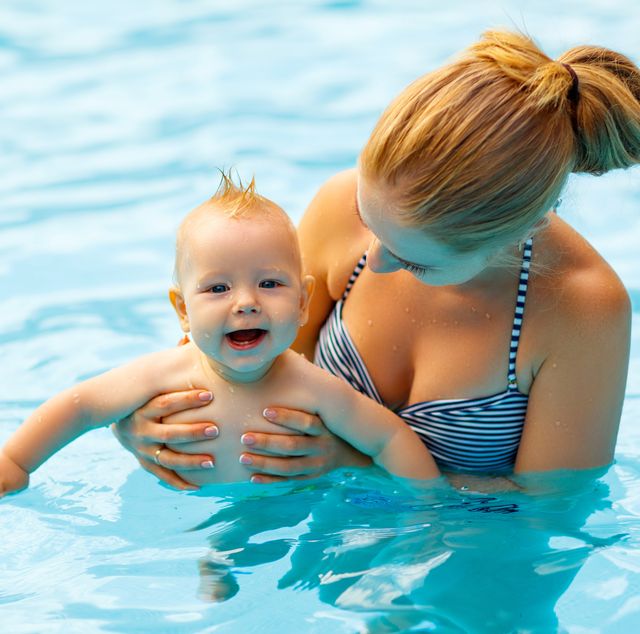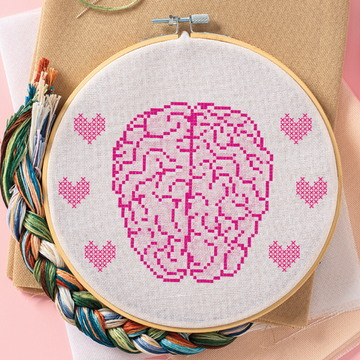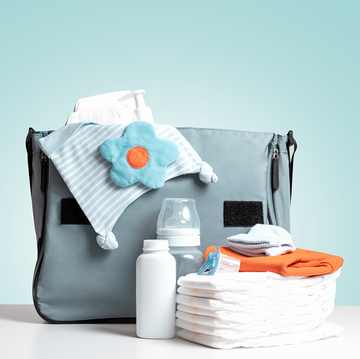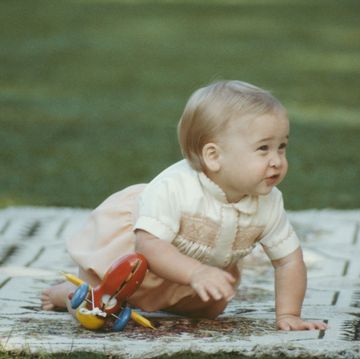- Brush up on some easy toddler swim safety tips before your family heads to the pool or beach, since drowning is the second most common cause of death in toddlers.
- Learn anti-drowning prevention strategies from the American Academy of Pediatrics.
- Stay sun-safe with the right sunscreens for toddlers — the Good Housekeeping Institute recommends using mineral sunscreens.
When summer starts to heat up, there's nothing better than heading to the pool or beach with your family to go cool off. But for toddlers, there are lots of dangers around the water. According to the Centers for Disease Control and Prevention (CDC), drowning is the second-most common cause of death for kids age 1 to 4, only behind congenital defects, which means parents have to use extra caution. "It's important to understand that children are never ‘drown-proof,’ which is why multiple layers of safety are imperative," says Jenny McCuiston, founder of Goldfish Swim School. Here are some ways to keep your toddler safe by and in the water.
Start lessons early — sooner than you'd think.
The American Academy of Pediatrics (AAP) revised its safe swimming guidelines. While the organization's policies used to state that toddlers couldn't really learn to swim until age 4 — and that lessons for younger kids made parents overconfident in their toddlers' swimming abilities — the AAP now says it does see a benefit in giving kids swim lessons starting at age 1. "New evidence shows that children ages 1 to 4 may be less likely to drown if they have had formal swimming instruction," the AAP states.
"The earlier they are in the water, the more quickly they become comfortable in the water," says Emily Leaman, co-founder and COO of Fitness Alive Philly, which starts classes for babies as young as five months."Assuming your toddler is brand new to the pool, the best way to begin is with Mom or Dad in the water, because that helps most children feel safe and confident."
It's also important to start small and take incremental steps, "You'll begin with basics like getting face and head wet, strong kicking and basic front-paddle strokes, and front and back floats," Leaman says. "It takes a lot of practice for kids to connect the dots to execute all of these motions at once, and turn it into actual swimming, so it's helpful to break them down into pieces."
Learn anti-drowning tips from the American Academy of Pediatrics.
The AAP offers a ray of hope: It reports that drowning rates have been steadily declining since 1985. And if parents learn and follow the AAP's swimming safety guidelines, the chances of drowning gets even smaller. The guidelines include tips like:
- Always have an adult on-hand to supervise children. This is true around pools, bodies of water, bathtubs, and even things like toilets and buckets, since toddlers can also drown if they get stuck with their faces submerged.
- Adults should always swim within arms-length of a toddler when the toddler is in the water.
- It's helpful if parents and caregivers learn CPR. You can find CPR classes at your local chapter of the Red Cross.
- Keep kids away from water when they're not with an adult. Many drowning incidents occur when parents don't anticipate swimming, such as when a toddler wanders outside and falls into a pool. "In addition to swimming lessons, the most important thing that a parent or caregiver can do to keep a toddler safe around water is to be aware of the potential risks and prevent unsupervised access to water," says Lindsay Mondick, senior manager of aquatics at YMCA of the USA. "This includes in-ground, above-ground and portable pools and spas, bath tubs, buckets and natural bodies of water like rivers, lakes, ponds, and canals." Any permanent pools should be surrounded by a four-sided fence with a lock, at least four feet high. You might also want to look into investing in a pool alarm. The AAP also says to be wary of inflatable pools, since the soft sides mean it's easy for a toddler to lean into them and then fall in.
- If swimming in open water, choose an area of beach with a lifeguard.
Get the right gear.
Some equipment marketed for safety may not actually provide any benefits. The AAP cautions against using any inflatable equipment, which can deflate, as a swimming aid. "Floaties, noodles, and plastic inner tubes do not protect against drowning," McCuiston says. "They are created as water toys, not life-saving devices."
"Our main 'tool' in the toddler class is actually Mom and Dad," says Leaman. "We teach the parents ways to hold the children in the water to allow their bodies to move and master basic motions while providing stability."
But the only true safety equipment to use in the water is a life jacket. "All children should wear a life jacket when riding in a boat," the AAP notes. "Small children and non-swimmers should also wear one at water’s edge, such as on a river bank or pier."
"Lifejackets can be essential water-safety tools when used in addition to adult supervision," McCuiston adds, "but be sure to check that they are Coast Guard-approved."
Learn the signs of drowning.
Unlike what you may see in the movie, drowning does not come with coughing, sputtering, or cries for help. Instead, it's more likely that a family member would just slip under water and not come up again. "Drowning is a surprisingly fast, often silent injury, so it’s key for parents to be aware of the risks and the signs of drowning," Mondick says.
Beat the heat.
For most families, using sunscreen and spending time by the water go hand in hand. While skin protection is not exactly a water-related danger, proper application is important to overall safety during your child's swim experience.
Mineral sunscreens work the best on kids, but you'll want to check to make sure that they don't have any ingredients that are frowned upon by the FDA or the Environmental Working Group. The Good Housekeeping Institute tested kids' sunscreens and came up with several great options, including Neutrogena Pure & Free Baby Sunscreen SPF 50.
The Good Housekeeping Institute also advises applying sunscreen at least 20 minutes before you go outside, using a golf ball-sized amount to cover your body, and re-applying after swimming or sweating.
Keep an eye out for symptoms of dehydration, sunburn, or overheating, like dizziness, weakness, or nausea, and be sure to drink plenty of water! And, if you can, avoid swimming at noon when the sun is at its strongest. With those tips in mind, you're ready to have fun at the pool.













